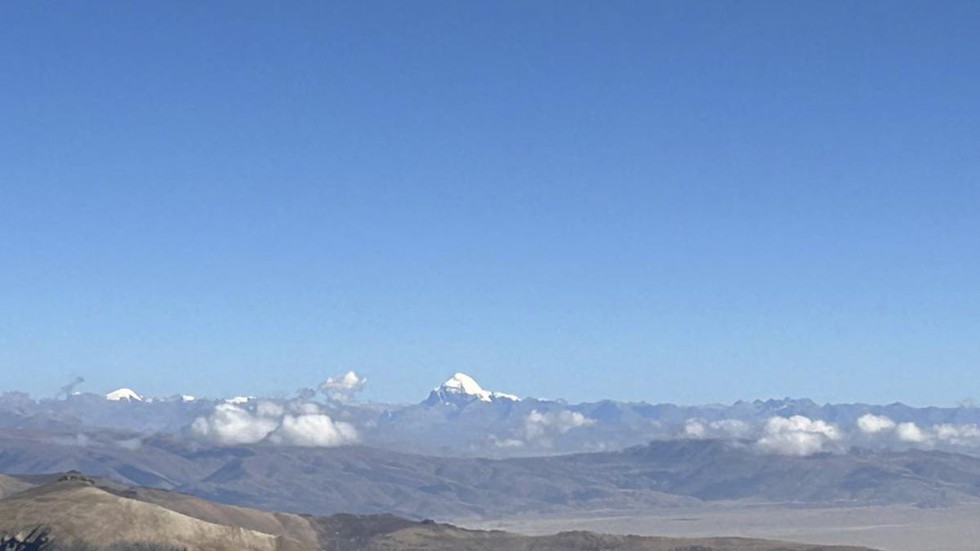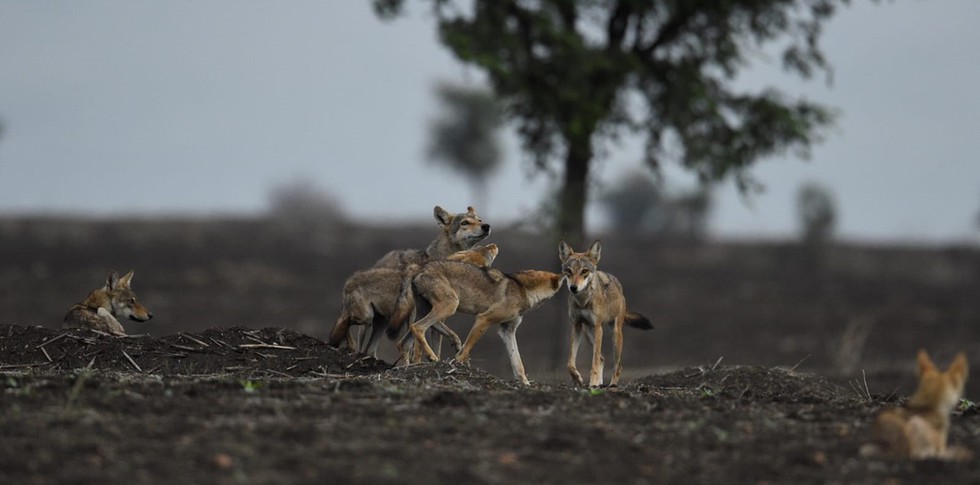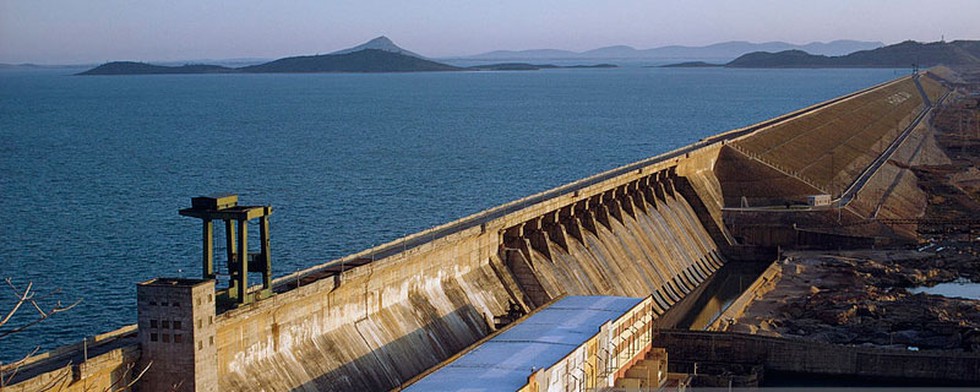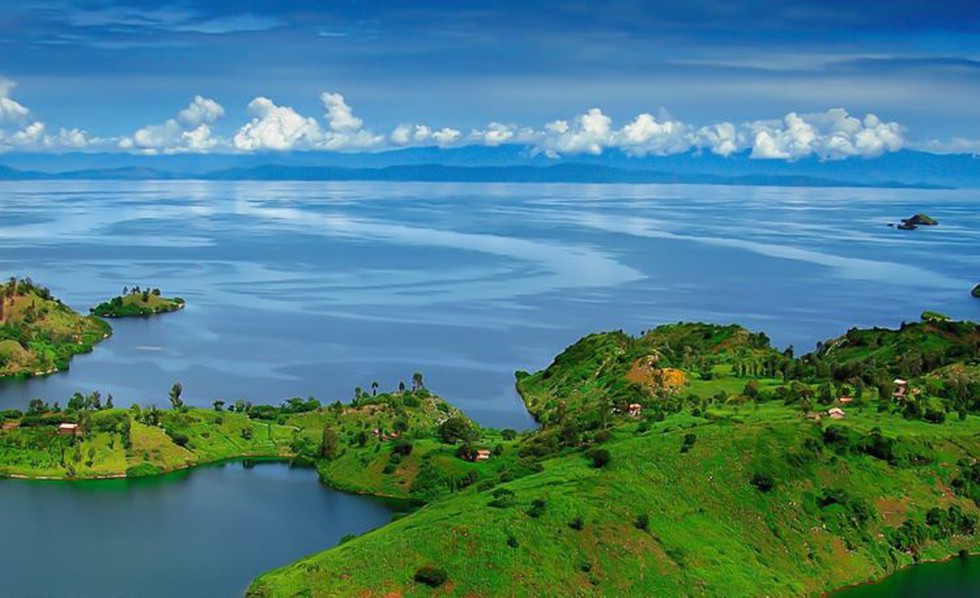1. Global Strategic Preparedness, Readiness and Response Plan (SPRP)
Recently, the Global Strategic Preparedness, Readiness and Response Plan (SPRP) to tackle dengue and other Aedes-borne arboviruses was launched by the World Health Organisation.

About Global Strategic Preparedness, Readiness and Response Plan (SPRP):
- It aims at reducing the burden of disease, suffering and deaths from dengue and other Aedes-borne arboviral diseases such as Zika and chikungunya, by fostering a global coordinated response.
- The SPRP comprises five key components namely
- Emergency coordination:Establishing leadership and coordination activities;
- Collaborative surveillance:Developing and using tools for early detection and control of dengue and other Aedes-borne outbreaks, including strengthened indicator and event-based surveillance, epidemiological analysis, laboratory diagnostics, and field investigations;
- Community protection:Engaging communities through active dialogue and local adaptation of prevention and response measures, including mosquito population control;
- Safe and scalable care:Ensuring effective clinical management and resilient health services to ensure patients can receive adequate care and prevent illness and death;
- Access to countermeasures:Promoting research and innovation for improved treatments and effective vaccines against these diseases.
- The Strategic Plan will be implemented over one year until September 2025.
- It is aligned with the Global Vector Control Response 2017–2030, a global strategy to strengthen vector control worldwide, and the Global Arbovirus Initiative, launched in 2022, which focuses on tackling mosquito-borne arboviruses with epidemic potential.
2. Lipulekh Pass
Recently, Pilgrims had the first-ever view of the sacred Kailash peak from the Old Lipulekh pass inside the Indian territory.

About Lipulekh Pass:
- Location: It is a high-altitude mountain pass located in the Kumaon region of Uttarakhand,near the trijunction of India, Nepal and China.
- It links the Indian state of Uttarakhand with the Tibet region of China.
- It lies at an altitude of approximately 5,334 meters (17,500 feet).
- Its elevation and strategic location make it a gateway to the higher reaches of the Himalayas.
- The Old Lipulekh Pass is situated in the Vyas Valley of Pithoragarh district in Uttarakhand and it carries immense religious significance.
- It is the first Indian border post opened for trade with China in 1992.
- This was followed by the opening of Shipki La Pass, Himachal Pradesh in 1994 and Nathu La Pass, Sikkim in 2006.
- Significance
- Ancient Trade Route:Lipulekh Pass has been utilized for centuries as a trade route, connecting the Indian subcontinent with the Tibetan plateau.
- Religious Significance: The pass also has religious significance, being an integral part of the Kailash Mansarovar Yatra, a sacred pilgrimage for Hindus.
- Devotees undertake this arduous journey to reach Mount Kailash, considered the abode of Lord Shiva, and the nearby Mansarovar Lake.
3. Co-district Initiative
Recently, the Assam government launched a new concept of “co-district” within a district administration by doing away with the existing system of civil sub-divisions.

About Co-district Initiative:
- ‘Co-districts’ are smaller administrative units below the districts led by an officer of the rank of Assistant District Commissioner.
- The objective of this first-of-its-kind initiative in the country is to take governance one step closer to people.
- It is expected to address the administrative challenges being faced by the administration in the districts.
- The co-district commissioners will have powers and responsibilities similar to those of the district commissioners.
- The functions that these offices are tasked with carrying out include land revenue matters, development and welfare work, excise and disaster management work.
- These will have administrative control over all departments within the co-district and have magisterial powers such as the issue of permissions for events.
- These will conduct routine administrative tasks such as the issue of ration cards, caste certificates, and sale permission of land.
4. What is Business- Ready Index?
The Indian government is aligning state business readiness rankings with the upcoming World Bank’s B-READY index.

About Business- Ready Index:
- The B-READY index is a successor to the Ease of Doing Business rankings, which were discontinued in 2021 due to irregularities.
- It is a ground-breaking initiative that aims to focus on quantitatively assessing the business environment across world economies.
- It envisages taking into consideration more diverse factors while arriving at the rating.
- Global financial institutions and multinational companies will use the B-Ready framework as a benchmark to understand the regulatory and policy environment of a country.
- It will be published annually, considering three main pillars: regulatory framework, public services, and efficiency.
- The index incorporates digitalization, environmental sustainability, and gender equality into each indicator, ensuring a holistic and forward-thinking approach to business evaluation.
- It tracks ten parameters covering a firm’s lifecycle from starting, operating, closing, and reorganising.
- The index will expand in three stages, covering 54 economies initially and reaching up to 180 countries by 2026.
Source : Govt looking to align some indicators of India’s BRAP 2024 index with the World Bank’s B-READY index
5. Indian grey wolf
The Indian grey wolf, with its keen instincts, is believed to target and prey upon the weaker, sicker individuals, essentially acting as nature’s culling system in the rugged landscapes of central Karnataka.

About Indian grey wolf:
- It is a subspecies of grey wolf that ranges from Southwest Asia to the Indian Subcontinent.
- It travels in smaller packs and is less vocal than other variants. They are nocturnal and hunt from dusk to dawn.
- Appearance: It is intermediate in size lies between the Tibetan and Arabian wolf, and lacks the former’s luxuriant winter coat due to its living in warmer conditions.
- Habitat:The Indian wolf inhabits areas dominated by scrub, grasslands and semi-arid pastoral
- They live in warmer conditions.
- Distribution:It has a wide distribution range that extends from the Indian subcontinent to Israel. There are about 3,000 animals in India, some in captivity.
- Conservation Status
- IUCN: Least concern
- CITES:Appendix 1
- Wildlife (Protection) Act of 1972: Schedule I
- Threat:Habitat loss and depletion of prey species etc.
6. Hirakud Dam
Built six decades ago, the canal network connected to Hirakud Dam, one of the biggest projects in eastern India, is all set to be renovated.

About Hirakud Dam:
- It is the longest dam in India and the longest earthen dam in the world.
- Total Length:79 km
- The dam was built across the Mahanadi River about 15 km upstream of Sambalpur town in the state of Odisha.
- It is made of earth, concrete and masonry.
- The dam forms a vast reservoir known as the Hirakud Reservoir or Hirakud Lake. It is the biggest artificial lake in Asia, with an area of 746 sq.km.
- This is one of the oldest hydel projects in India, being the first post-independence major multipurpose river valley project in the country. It was inaugurated in the year 1957.
- Purpose:
- The project provides 1,55,635 hectares of Kharif and 1,08,385 ha of Rabi irrigation.
- The installed capacity for power generation is 359.8 MW.
- More than 436,000 hectares of land in the Mahanadi Delta also get irrigated by the water which is released from the powerhouse.
- Besides, the project provides flood protection to 9500 sq. km of delta area.
- Cattle Island:
- It is a small island in the Hirakud reservoir.
- It is inhabited by a large herd of wild cattle, which are believed to be the descendants of cattle that were left behind by villagers when the dam was constructed in the 1950s.
7. What is Very Short-Range Air Defence System (VSHORADS)?
India successfully conducts tests of fourth-generation very short-range air defence system.

About Very Short-Range Air Defence System (VSHORADS):
- VSHORADS is a Man Portable Air Defence System (MANPAD) developed for neutralising low-altitude aerial threats at short ranges.
- It has been indigenously designed and developed by DRDO's Research Centre Imarat, Hyderabad, in collaboration with other DRDO laboratories and industry partners.
- The design of the missile, including the launcher, has been highly optimized to ensure easy portability, and it doesn't require a lot of personnel to operate.
- The VSHORADS missile incorporates many novel technologies, such as the miniaturised Reaction Control System (RCS) and integrated avionics.
- It is propelled by a dual-thrust solid motor.
- It has a range of up to 6 km.
- The missile system, being man-portable and specifically optimised for lightweight compared to other missile systems, can be deployed quickly in the mountains close to the Line of Actual Control, with China in Ladakh and Arunachal Pradesh.
8. What are Hammerhead Sharks?
Scientists recently discovered a new species of hammerhead shark named Sphyrna alleni from the Caribbean and the Southwest Atlantic.

About Hammerhead Sharks:
- Named for the unusual and distinctive form of their heads, hammerhead sharks belong to the family Sphyrnidae.
- They are characterized by a flattened hammer- or shovel-shaped head, or ‘cephalofoil’.
- These distinctive heads serve multiple purposes, including granting the sharks 360-degree vision as well as better hunting abilities.
- There are nine species of Hammerhead Sharks, each with varying lengths.
- The great hammerhead shark is the largest of all hammerhead species, reaching a maximum known length of 20 feet.
- Distribution:
- They are widely distributed in tropical and temperate marine waters near the coasts and above the continental shelves.
- They may migrate seasonally, moving equatorward during the winter and poleward during the summer.
- In years with warm El Niño conditions, hammerhead sharks may range many hundreds of kilometres farther than normal.
- Features:
- The upper sidesof these fish are greyish-brown or olive-green, and they have white bellies.
- They have very impressive triangular, serrated teeth—like the edge of a saw's blade.
- The hammerhead also has special sensors across its headthat helps it scan for food in the ocean.
- They are viviparous: they retain fertilized eggs within the body and give birth to live young
- They can live 20-30 years.
- They are exothermic animals, meaning that they have no internal way to control their body temperature.
- Hammerhead sharks are one of the most threatened shark families, mainly due to overexploitation, with all species but one (Sphyrna gilberti) being globally listed as Vulnerable, Endangered, or Critically Endangeredby the IUCN.
9. Lake Kivu
At least 78 people are dead after a boat carrying 278 passengers capsized in eastern Congo's Lake Kivu recently.

About Lake Kivu:
- It is one of the great lakes of East Africa, situated between the Democratic Republic of Congo (DRC) to the west and Rwanda to the east.
- It is Rwanda’s largest lake and the sixth largest in Africa.
- It is in the Albertine Rift, the western branch of the East African Rift.
- Lying at 1,460 metres above sea level, it occupies 1,040 square miles (2,700 sq.km).
- 58% of its waters are lying in the DRC; the rest are situated in Rwanda.
- It is 90 km long and 50 km wide.
- The lake has a maximum depth of 475 m and an average depth of 220 m.
- Its irregular shores form a number of inlets and peninsulas, and plenty of waterfalls.
- Lake Kivu empties into the Rusizi River, which flows southwards into Lake Tanganyika.
- The tenth-largest inland island on the planet, Idjwi Island, is located on Kivu Lake.
10. Who was Rani Durgavati?
The Madhya Pradesh cabinet recently approved the formation of a panel to develop a memorial and garden dedicated to Gond queen Rani Durgavati for Rs 100 crore.

About Rani Durgavati:
- Rani Durgavati (1524-2024) was the descendant of the famous Chandela dynasty of Mahoba and the queen of the Gond kingdom of Garha-Katanga.
- She was born on 5th October 1524 A.D. in the family of the famous Chandel emperor Keerat Rai.
- The Chandel Dynasty is famous in Indian history for the valiant king Vidyadhar, who repulsed the attacks of Mehmood Gaznavi.
- His love for sculptures is shown in the world-famous temples of Khajuraho and Kalanjar Fort.
- Rani Durgavati was born in Kalinjar (Banda, U.P.), one of the most important forts of medieval India.
- In 1542, she was married to Dalpatshah, the eldest son of King Sangramshah of the Gond Dynasty. Chandel and Gond dynasties got closer as a consequence of this marriage.
- She gave birth to a son in 1545 A.D. who was named Vir Narayan.
- Dalpatshah died in about 1550 A.D. As Vir Narayan was too young at that time, Durgavati took the reins of the Gond kingdom in her hands.
- Two ministers, Adhar Kayastha and Man Thakur, helped the Rani in looking after the administration successfully and effectively.
- Rani moved her capital to Chauragarh in place of Singaurgarh. It was a fort of strategic importance situated on the Satpura hill range.
- It is said that trade flourished during this period. People were prosperous.
- Like her husband’s predecessors, she extended her territory and accomplished the political unification of Gondwana, also called Garha-Katanga, with courage, generosity, and tact.
- She distinguished herself as a warrior and fought with unvarying success against Baz Bahadur, the Sultan of Malwa.
- In the year 1562, Akbar vanquished the Malwa ruler Baj Bahadur and annexed the Malwa with Mughal dominion. Consequently, the state boundary of Rani touched the Mughal kingdom.
- She is chiefly remembered for defending Gondwana against the Mughal Empire. She took on the might of the Mughal Empire with great courage and leadership.
- Though she finally faced defeat at the hands of the Mughal army, she is remembered as a warrior in blood and spirit.


























































































































































.png)
.png)
.png)
.png)
.png)


.png)
.png)
.png)





.png)
.png)






.png)
.png)
.png)
.png)
.png)
.png)
.png)
.png)
.png)

.png)







.png)
.png)


.png)
.png)
.png)


.png)

.png)
.png)





.jpg)

.png)
.png)


.png)

.png)
.png)
.png)

.jpg)

.jpg)


.png)

.png)
.png)
.png)
.png)
.png)
.png)
.png)
.png)
.png)
.png)




.png)

.png)





.png)
.png)
.png)
.png)
.png)
.png)
.png)
.png)
.png)
.png)
.jpg)
.jpg)

.png)
.png)
.png)
.png)
.png)
.png)
.png)
.png)
.png)
.png)
.png)
.png)
.png)
.png)
.png)
.png)
.png)
.png)
.png)
.png)
.png)
.png)



.png)
.png)

.jpg)
.jpg)


.jpg)
.jpg)
.jpg)
.jpg)
.jpg)

.jpg)








.jpg)
.jpg)
.jpg)
.jpg)
.jpg)

















.jpg)
.jpg)







.jpg)


















.jpg)
.jpg)






























































































.jpg)
.jpg)


























.jpg)

.jpg)










.jpg)








.jpg)




.jpg)










.jpg)


















.jpg)












































.jpg)














.jpg)
.jpg)
.jpg)





.jpg)

.jpg)
.jpg)





































































.jpg)


































.jpg)
.jpg)
















































.jpg)












.jpg)


.jpg)




.jpg)
.jpg)
.jpg)

.jpg)
.jpg)
.jpg)
.jpg)

.jpg)
.jpg)
.jpg)

.jpg)
.jpg)
.jpg)
.jpg)
.jpg)
.jpg)
.jpg)
.jpg)

.jpg)


.jpg)
.jpg)
.jpg)
.jpg)
.jpg)
.jpg)
.jpg)
.jpg)
.jpg)
.jpg)











.jpg)
.jpg)





.jpg)
.jpg)
.jpg)
























.jpg)
























.jpg)









.jpg)
.jpg)







.jpg)
.jpg)









































.jpg)
.jpg)
.jpg)
.jpg)
.jpg)

.jpg)
.jpg)
.jpg)
.jpg)
.jpg)


.jpg)
.jpg)
.jpg)
.jpg)
.jpg)

.jpg)
.jpg)
.jpg)
.jpg)
.jpg)
.jpg)
.jpg)
.jpg)
.jpg)
.jpg)
.png)

.png)
.png)

.png)
.png)
.png)
.png)


.jpg)
.jpg)

.jpg)
.jpg)
.jpg)

.png)
.png)
.png)
.png)
.png)
.png)
.png)

.png)
.png)
.png)
.png)
.png)
.png)
.png)
.png)
.png)
.png)





































































-min.png)



.png)




.png)








































